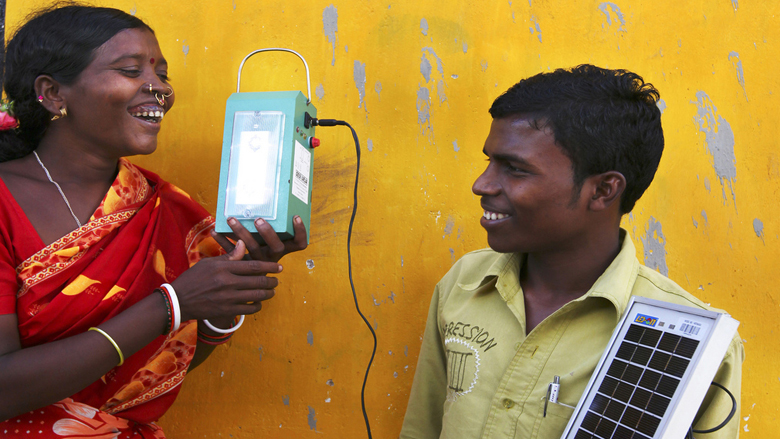In many ways Gandhi was an early environmentalist. He believed in a self-sustaining rural life, walked long distances to the sea to make salt, and spun his own cotton yarn. Had he been alive today, he would certainly have made full use of India’s abundant sunshine to generate his own clean and renewable solar power.
Today, India’s climate change mitigation strategy bears the unmistakable stamp of the father of the nation. For, India has set itself the extremely ambitious goal of achieving a five-fold jump in renewable energy - from 35 GW in 2010 to 175 GW by 2022. Of this, a sizeable segment - 100 GW - is expected to be from solar, with 40% of the total coming from just roof-top solar power alone.
Not surprisingly, when this ambitious target was first announced, there were several naysayers. Let alone make the quantum leap to 175 GW in just seven years’ time, India was nowhere close to meeting its original target of 20 GW. Most programs were driven by state-based incentives. And, the slow growth of demand meant that much of the manufacturing capacity lay idle, or operated at exceptionally low capacities.
Paving the way for transformation
Since then, of course, India’s solar power story has taken off dramatically. In 2009, when Gujarat first launched its solar policy and laid the foundation for the country’s first solar park, the cost of solar power was around US 25 cents (Rs 15) per unit. This fell radically to less than US 7 cents (INR 5) per unit when Madhya Pradesh and Andhra Pradesh recently launched their solar bids. Where once solar power was considered untouchable by banks, it has now become a bankable technology. So much so that large conglomerates like Softbank have announced investments to the tune of $10 b in solar power over the coming years.
Along with the fall in costs, India’s solar power capacity has also grown exponentially. In just 6 years, capacity has grown from less than 50 MW in 2010 to around 7GW in 2016 – a quantum 140 fold leap. Moreover, the increasing pace of state and national-level procurement has meant that a further 10 GW of solar projects are in the pipeline. This remarkable growth is being led by the development of some of the largest solar parks in the world such as the Pavgada Solar Park in Karanataka (2,000 MW) and the Rewa solar park in Madhya Pradesh (750 MW).
Catalysing the roof-top solar market
While large-scale ground mounted solar power units have grown rapidly, the roof-top solar segment has been slow to take off. Until now, financing has been a key constraint for these developers. This is because commercial banks have refrained from lending to this segment, preferring to lend to the large-scale grid connected sector instead.
The World Bank is providing a $625 million loan to support the Government of India’s program to generate electricity from widespread installation of rooftop solar photo-voltaic (PV). The project will finance the installation of at least 400 MW of Grid Connected Rooftop Solar Photovoltaic across India. In fact, the business case for roof-top solar power already exists, especially for industrial and commercial consumers. For them, roof-top solar power works out cheaper, since electricity tariffs for these consumers in metro cities range between US 12-24 cents per units (8-15 INR) – compared to just US 9-10 cents (Rs 6-7) for solar power. And, there is ample evidence globally, especially from the US and Germany, to show that high volumes of solar generation can be integrated efficiently into the power system through a variety of business models.
Given these developments, we believe that India is on the verge of a revolution in roof top solar power. In fact, the day is not far off when roof top solar products will be sold as easily as TVs or cars. Consumers will then be able to go into a shop and buy different brands and capacities, or be approached by an agent who offers them a variety of loans to do so.
Once solar power units become easy to install, Indian households may finally start using their roof tops for generating much-needed solar power, instead of wasting this precious space in merely drying their laundry.



